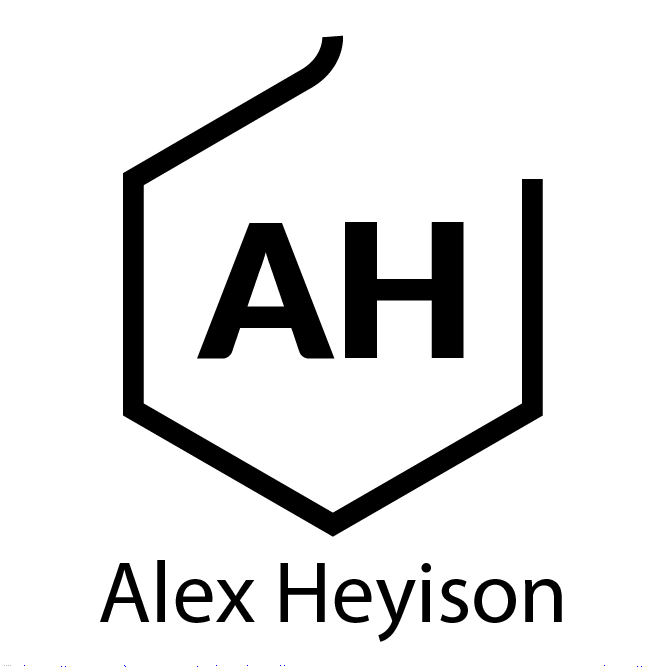At a Glance...
8 weeks | Gilson Snowboards |Spring 2020
Problem Statement
Develop and communicate a Service Innovation concept that would create value for Gilson, customers, partners, suppliers and other stakeholders.
Roles
UX Research, Concept Design, Team Liaison
Team
Alex Heyison, Anton Nikhov, Jocelyn Gao, Nabeeha Fatima
Tools
Figma, Procreate, Adobe After Effects, Service Blueprint, Value Mapping
Design Intents
•Leverage Gilson riders' already strong brand affiliation
•Allow for more frequent meaningful brand interactions in the years after a client has completed a board purchase.
•Minimize resources required given Gilson's size and position in market
•Build on the success of Gilson's custom artwork boards and their relationship with local artists without cannibalizing existing revenue streams
•Allow for more frequent meaningful brand interactions in the years after a client has completed a board purchase.
•Minimize resources required given Gilson's size and position in market
•Build on the success of Gilson's custom artwork boards and their relationship with local artists without cannibalizing existing revenue streams
Approach
Through user interviews, service blueprinting and client feedback, find and unlock hidden value potential to allow our client to grow their relationship with their users.
From a high level, our team was able to identify what unique assets and potentials Gilson had at their disposal and points of intervention within their existing service where we could provide value.
Gilson was a unique and exciting client to work for given their enthusiasm for innovation, their unique place in the market as an online-only snowboard retailer, and for their proven track record using strong service principles to build brand affiliation.
Our team was able to both gain a deep understanding of the market and service pipeline while also being agile enough to incorporate feedback through several iterations
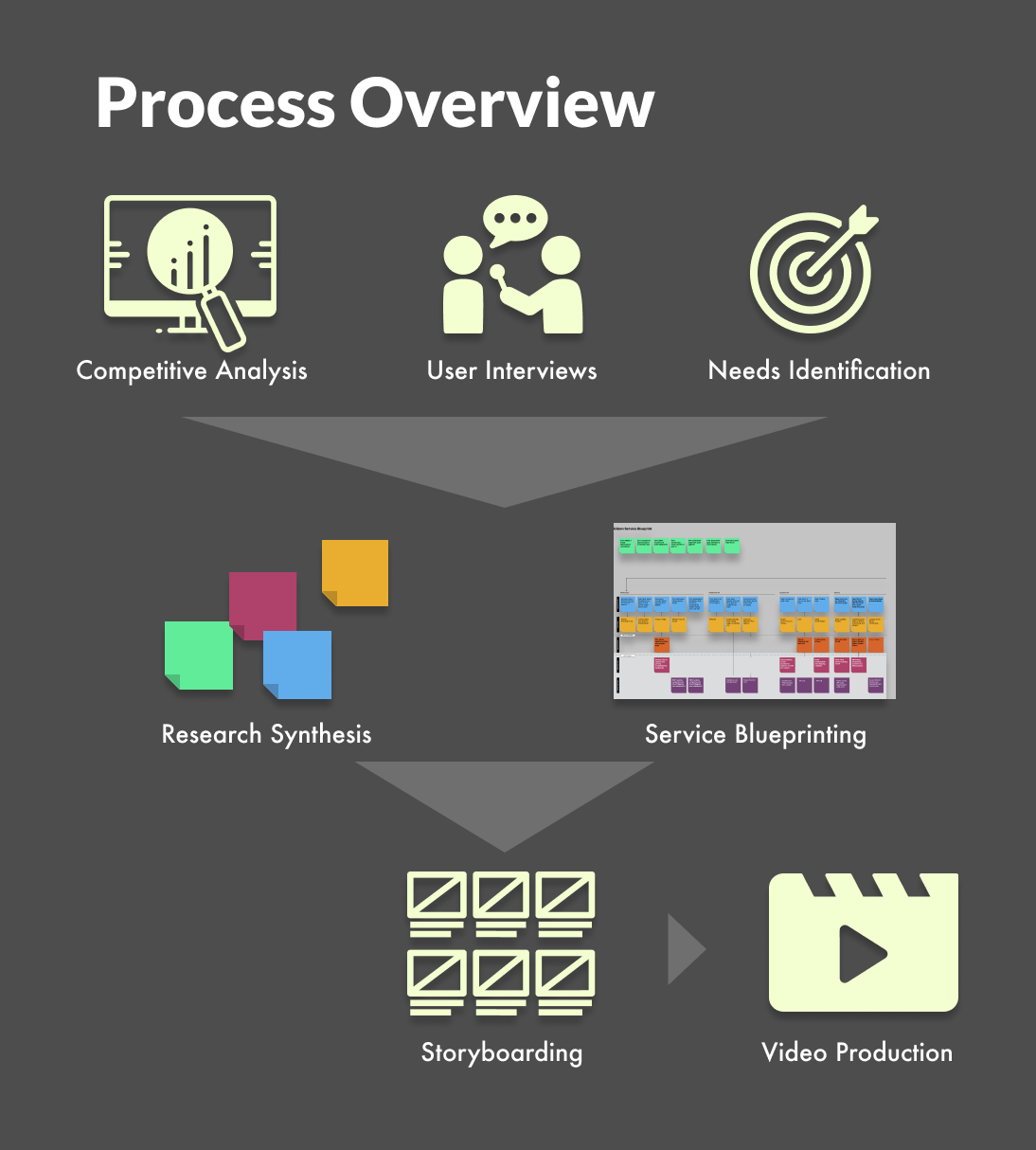
Research
Understanding Gilson
Through conversations with Gilson stakeholders and secondary market research, our team was able to ensure that our recommendations aligned with Gilson's needs.
Broadly speaking, we came to understand:
•Gilson is a small operation. Their online-only approach gives them agility, but also constrains their reach and visibility. They can't rely on boarders stumbling upon them.
•Service and interaction are built into Gilson's brand. They pride themselves for being accessible to their users, are motivated by these interactions, and wish they could interact with their customers more without hurting operations.
•Gilson boards are priced higher than competitors, but Gilson riders love their boards and ride them a long time. Their repurchase rate is high, but purchases per year is middling.
•Gilson's custom board art line has shown early signs of success. Partnering with other brands or local artists on artwork drives excitement and builds lasting relationships

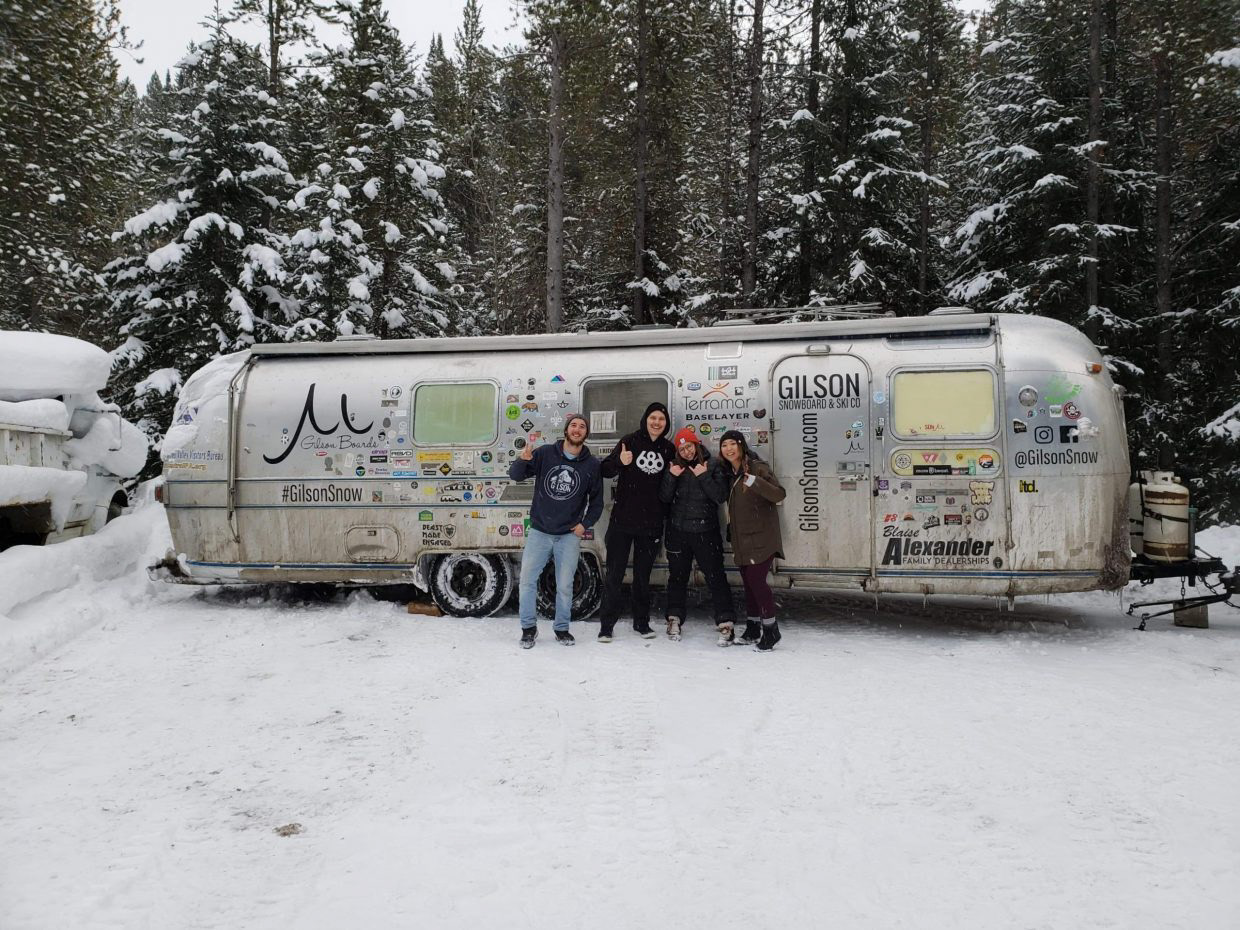
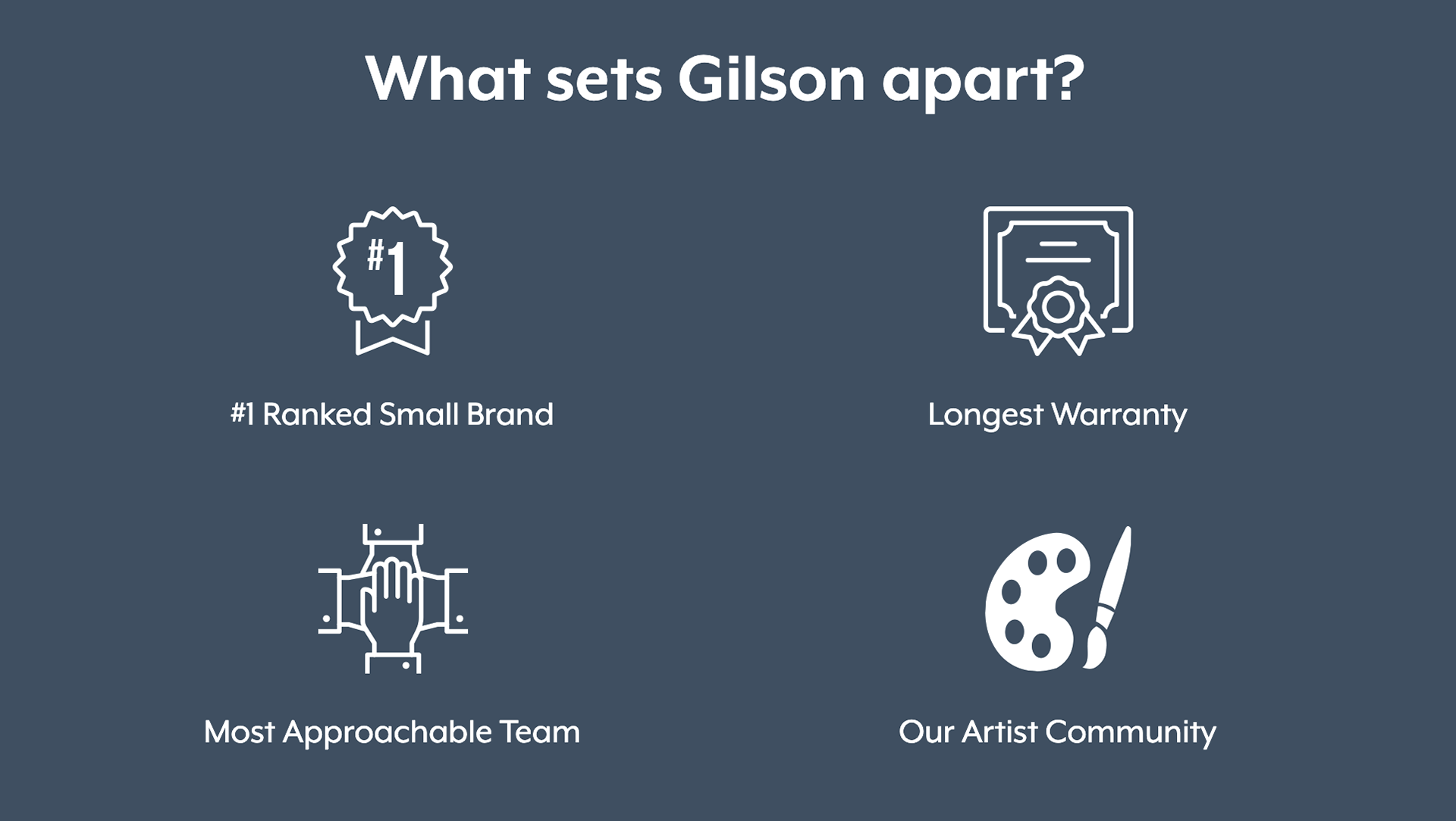
Understanding the Snowboard Retail Service
After our initial lines of research, we wanted to diagram out our understanding of the service we were working on to identify interesting intervention points, provide structure to how we crafted interviews, and to allow for better alignment of the team's vision.
These diagrams became invaluable for our orientation within the problem space and later in the project as we sought to flesh out concepts to integrate more broadly into Gilson's model.



User Insights
A week after our project launched, the nature of our work changed drastically. Even as we moved to an entirely remote workflow, we knew that we had to ensure that user research stayed a part of the foundation of our design.
We interviewed new and experienced riders, college club team captains, retail professionals and social media experts from other outdoor brands.
We learned...
1. Snowboarders care a lot about the graphics on their board. Often new riders don't consider this and feel pressured to either hide artwork that doesn't match their style or buy a new board entirely.
2. Snowboarders tend to rally together to discuss their boards, styles and locations.
3. Since it is an expensive investment, snowboarders may only buy a new board only when they have damaged their old boards or want to try a different style.
4. Storing boards in the offseason is a pain-point in dense cities
2. Snowboarders tend to rally together to discuss their boards, styles and locations.
3. Since it is an expensive investment, snowboarders may only buy a new board only when they have damaged their old boards or want to try a different style.
4. Storing boards in the offseason is a pain-point in dense cities
Rapid Ideation
In quick sketches, our team visualized some of our early concepts so that we could hear the Gilson's team's with plenty of time to iterate.
After hearing their thoughts, we discussed the feedback and shaped our way forward while making sure to document our decision in consideration of the information at hand.
For a brief summary of our decision-making, click to zoom on each concept.
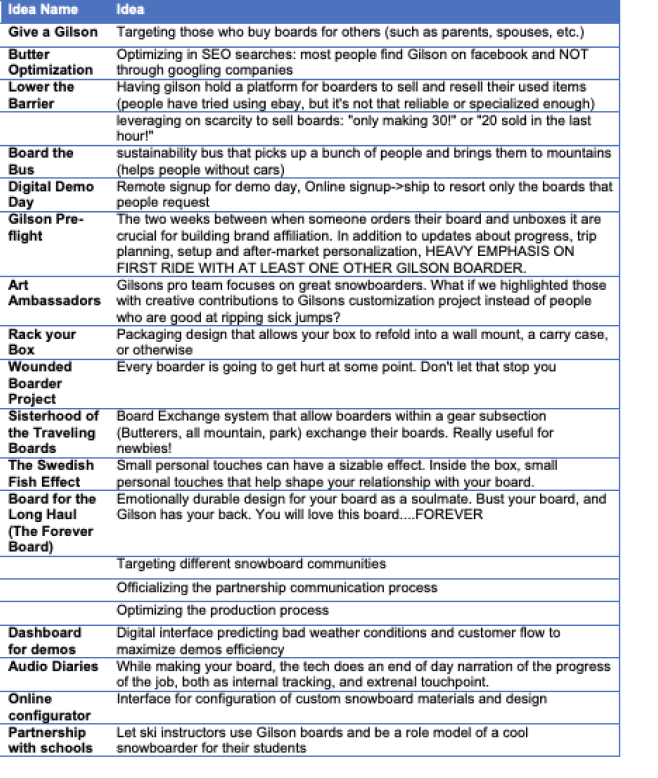
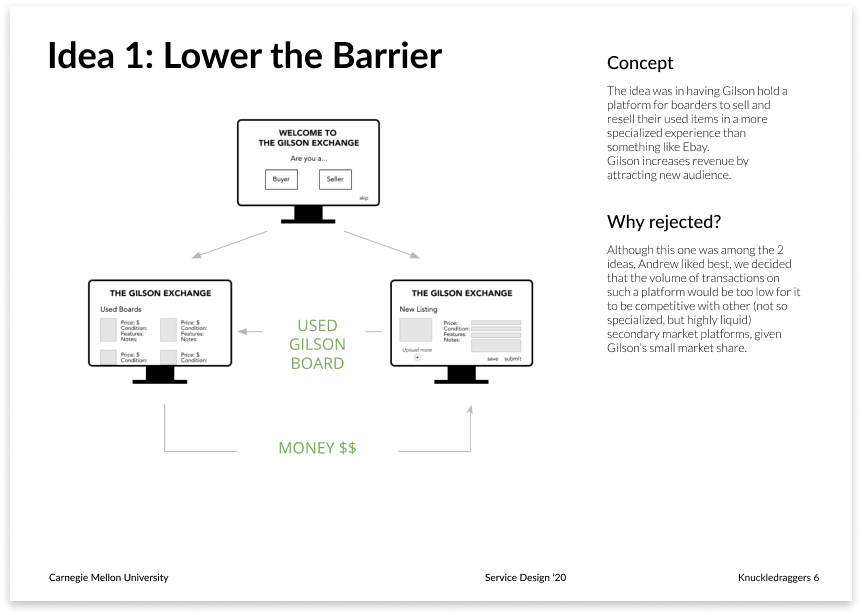
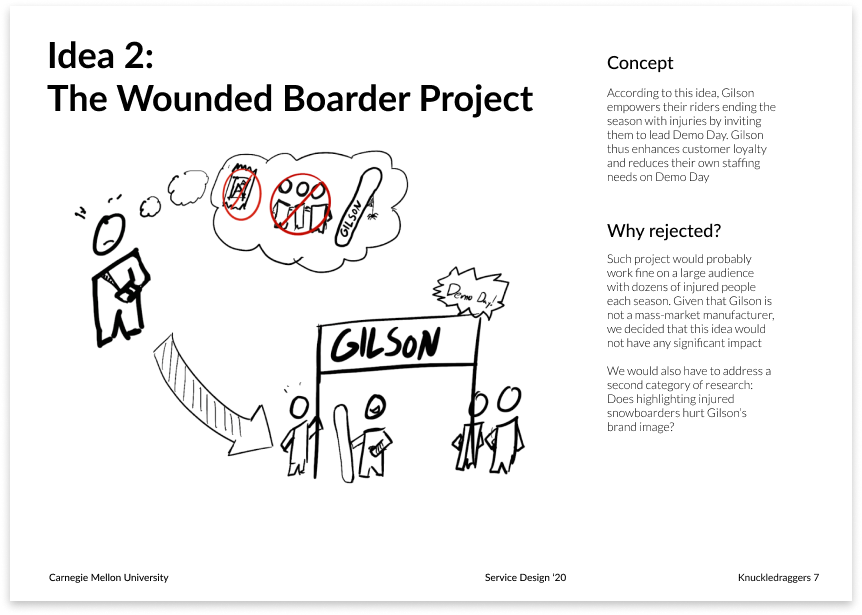

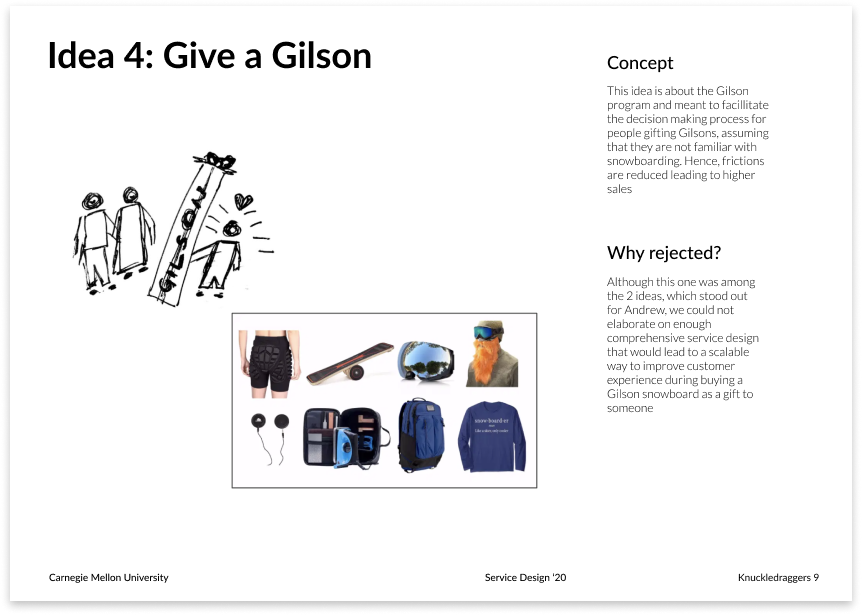
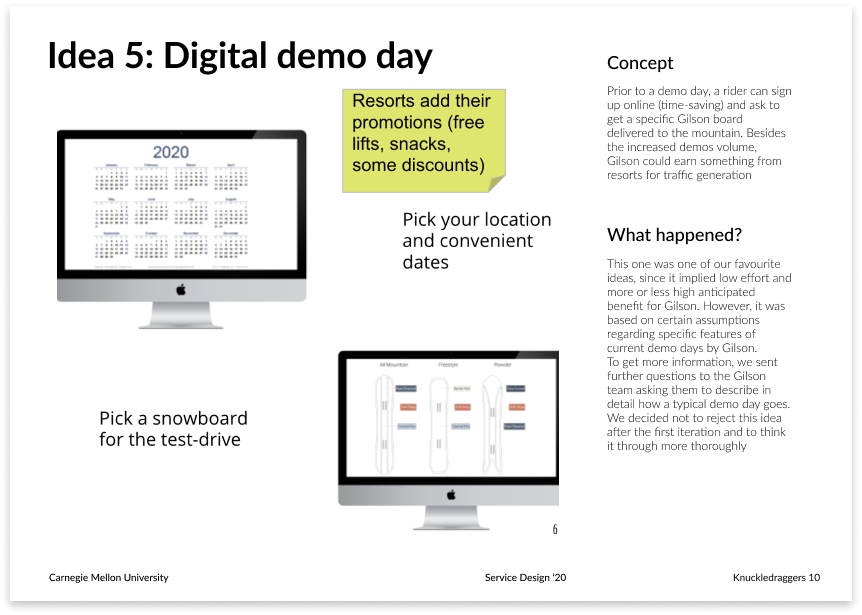
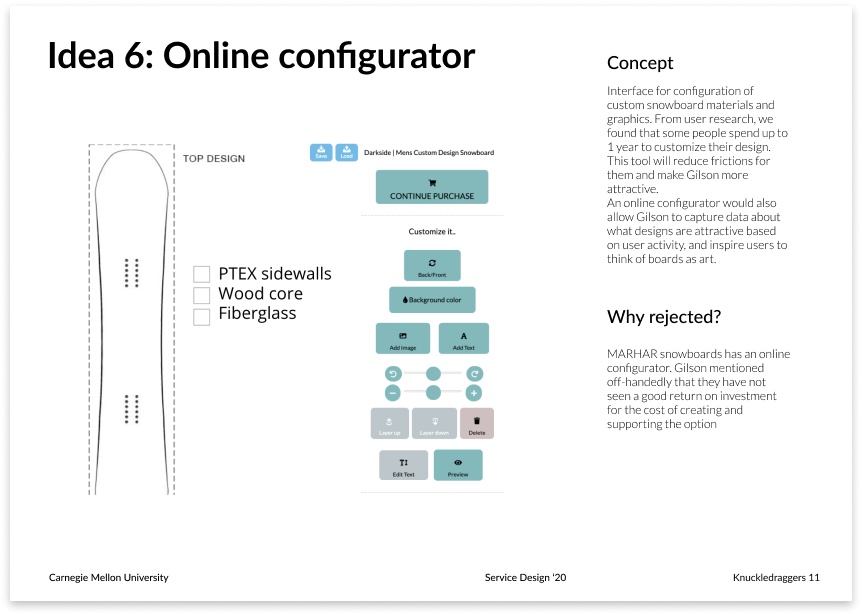

Incorporating Feedback
Although we had already identified the need for low-lift initiatives at Gilson, one thing we had not fully considered was the need to build off proven initiatives. What we found was that Gilson's level hierarchy meant that we needed broad buy-in from a variety of stakeholders, which we observed was best done by building off past initiatives.
With that learning in mind, our future iterations focused on the Service Design tactic of unlocking hidden value in existing service models.
Of the concepts we presented, "Shareboarding" was our personal favorite as a best-fit candidate for Gilson.
Part of the challenge of making the concept work was the basic fact that snowboards are hard to ship repeatedly. They’re so bulky.
What if we broke it down into parts?
Better.
What if we unbundled what people love about getting a new board?
Artwork Unbundled
Early in the project, Gilson had mentioned the success of their custom line as a growth opportunity and uniquely suited to their production paradigm.
They identified demand for personalized artwork, they’d formed strong partnerships with artists to bring people’s vision to life, and by way of the program, had several hundred pieces of artwork sent in to be printed into a board.
We also heard that Gilson riders keep their boards for a long time. They love them for years and years. While that’s great, we saw two areas of opportunity
1. To find a way to foster engagement between Gilson and their riders AFTER a board purchase
2. To leverage the artistic activity and personalized appeal of the Gilson Custom program independently of the physical board
Mapping Sources of Value
A core tenet of Service Design is the theory that stable, profitable services are built upon carefully implemented value exchanges.
As we developed this concept we sketched out for our stakeholders visualizations of what the potential of the idea could be.
1. Gilson Artists will have a more direct line to riders
2. Unbundled artwork can be community designed and community voted
3. Boards have to come in one piece. Artwork doesn’t. Art can grow!
4. Brands sponsor artwork, not fiberglass . More frequent artwork = more frequent $ponsorship
5. Lots of segments. Riders who are sick of their old design + riders who want to keep their board updated
6. Gilson artwork can be placed and feature on another brand’s board!
2. Unbundled artwork can be community designed and community voted
3. Boards have to come in one piece. Artwork doesn’t. Art can grow!
4. Brands sponsor artwork, not fiberglass . More frequent artwork = more frequent $ponsorship
5. Lots of segments. Riders who are sick of their old design + riders who want to keep their board updated
6. Gilson artwork can be placed and feature on another brand’s board!
Communicating a Concept
